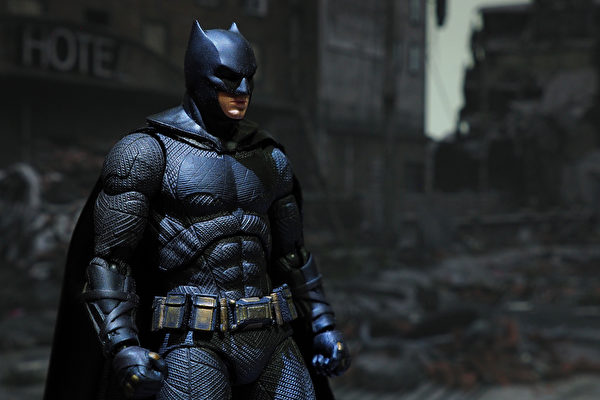In movies or comics, Batman is a superhero known for his sense of justice, and it seems that his image can also inspire people to do good deeds in real life. A recent study has found that in the presence of someone dressed as Batman, people are more likely to perform acts of kindness.
Led by Professor Francesco Pagnini from the Catholic University of the Sacred Heart in Italy, the researchers conducted multiple experiments on the Milan subway to observe whether people would give up their seats for pregnant women, including scenarios with someone dressed as Batman.
The researchers had a man dressed as Batman and a woman wearing a fake pregnancy belly to portray a pregnant woman. They entered the train compartment from different doors, maintaining a distance of several meters and did not interact during the experiment to ensure that people would not realize they were together.
The Batman costume included iconic cape, logo, and pointed cowl that made it easily recognizable to people.
The study found a correlation between the presence of Batman and acts of kindness. Unusual or attention-catching moments seem to break people’s mental “autopilot” mode, encouraging them to engage more actively in social activities.
In 138 experiments, when Batman was present, there was a 67.21% probability that passengers would give up their seats for pregnant women. In contrast, without Batman, the probability of passengers offering their seats decreased significantly to 37.66%.
Regarding why seeing Batman makes people more friendly, the researchers wrote in the report: “When asked about the reasons for performing such prosocial behavior, most participants from both groups mentioned the importance of recognizing pregnancy, some directly referred to social norms, education, or safety issues.”
Interestingly, among the passengers who gave up their seats, none of them directly linked their actions to the presence of Batman. 14 individuals (43.75%) stated that they didn’t even notice Batman.
The researchers speculated that unexpected sightings might make people more focused on themselves, thus making it easier for them to notice others in need of help.
For instance, during the morning commute while listening to a podcast, you may not pay much attention to other passengers around you. However, if someone dressed as Batman boards the train, you are likely to notice him. Suddenly, you may also notice the pregnant woman who might need the seat more than you.
This subconscious process may explain why individuals do not directly link their good deeds to Batman’s presence. As for those who completely missed Batman, their situation is harder to explain, but researchers suggest that they might have noticed the commotion caused by Batman’s presence among other passengers.
However, the researchers pointed out that this heightened awareness of the surrounding environment is not the only possible explanation.
Pagnini mentioned that the image of superheroes might reinforce cultural values, gender roles, and chivalry, aligning with the priming effect in studies about superheroes. In other words, Batman’s image could play a role in promoting prosocial behavior.
He suggested that this study could help establish a method to encourage people to perform more small acts of kindness. Additionally, it may provide insights into the workings of the human mind, especially as concerns grow about the decreasing attention span due to overuse of social media.
It’s worth noting that people worldwide have been imitating Batman’s appearance to do good deeds, especially during the outbreak of the COVID-19 pandemic.
In a previous report by Dajiyuan, an anonymous man in Chile frequently dressed as Batman, distributing food to homeless people in need. Similarly, in Mexico, a man driving a Batmobile and wearing a Batman costume used a loudspeaker to broadcast messages, urging the public to stay at home and maintain proper social distancing.

